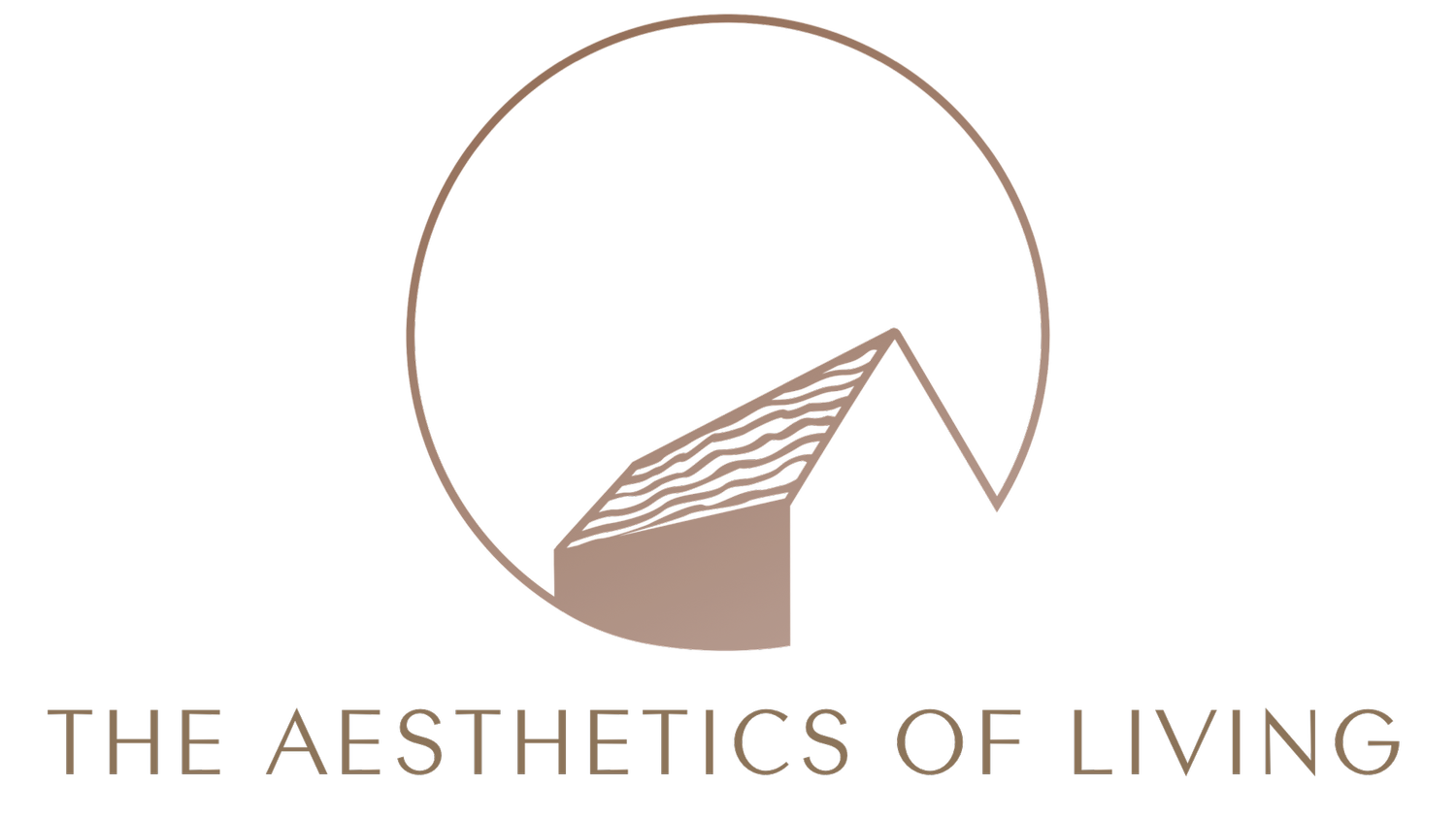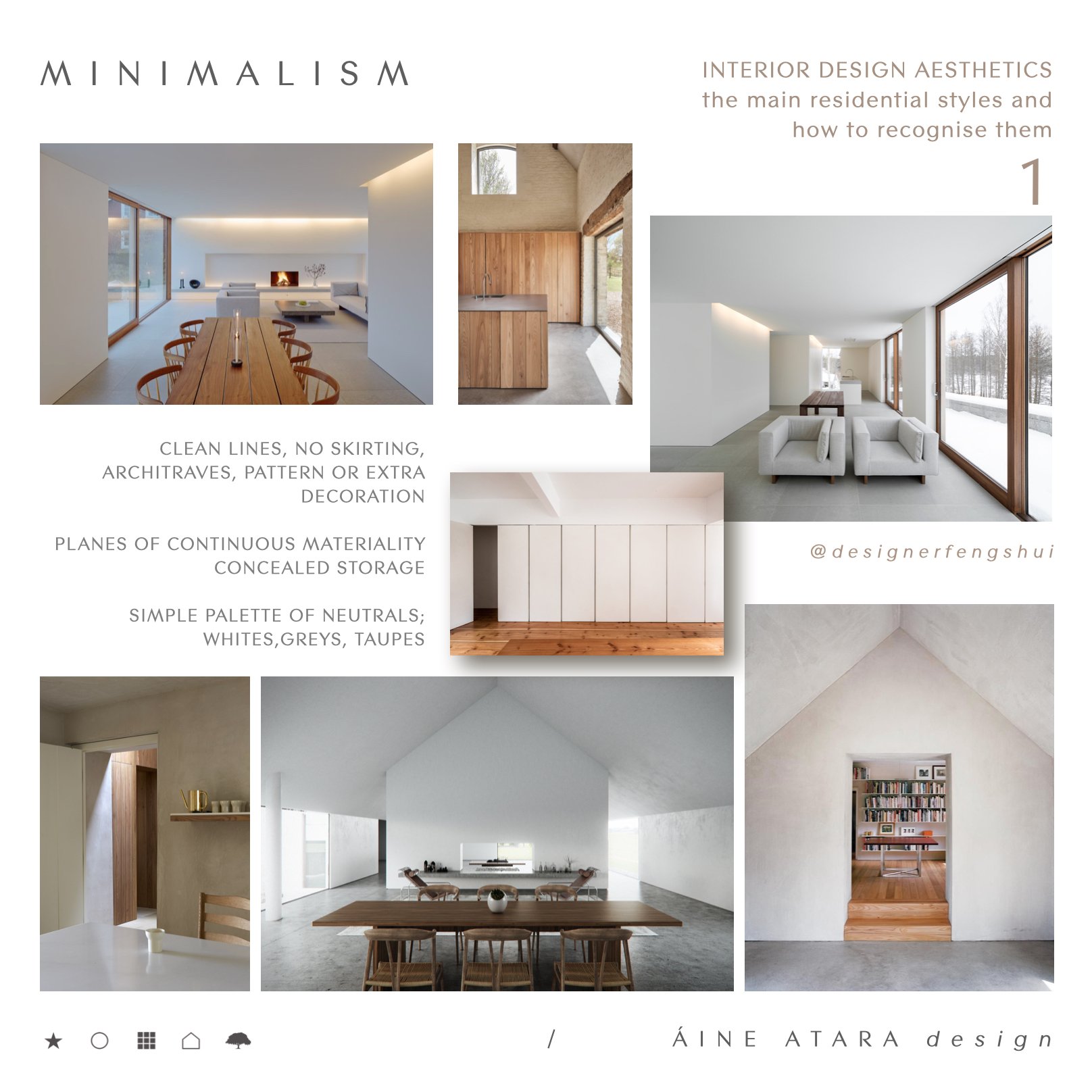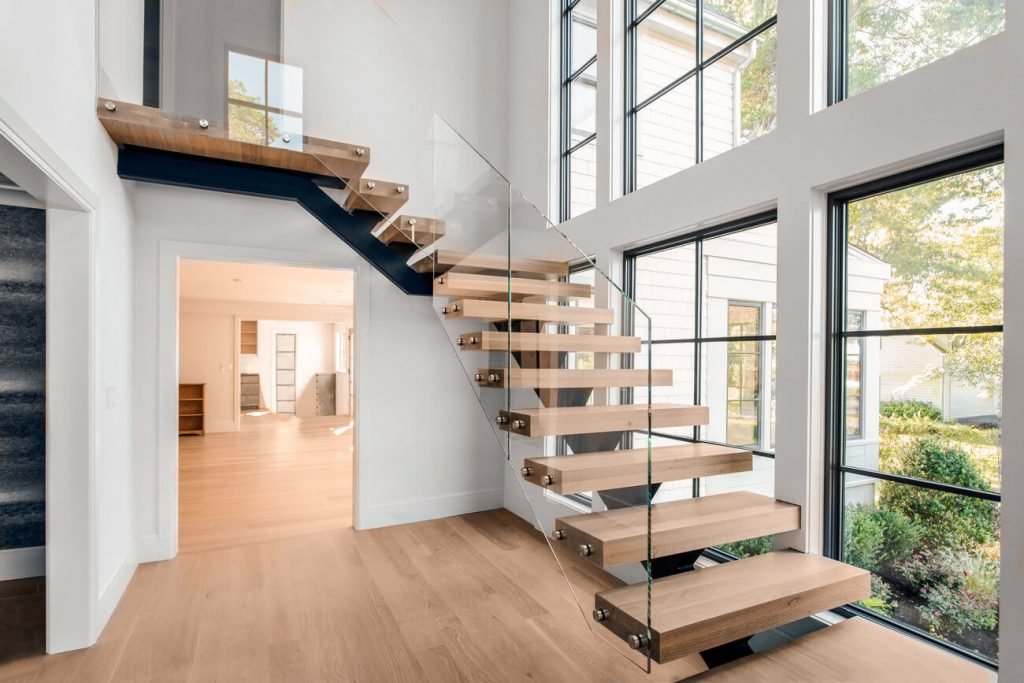MINIMALISM
lots of concealed storage is the real benefit of minimalism
Minimalism can be dopamine inducing. I’ll explain this first and then end with the more cortisol (stress making) inducing aspects of this aesthetic.
I’m taking about the architectural genre here in this post, not the art movement or the lifestyle choice. Essentialism is choosing to live with less. The tiny house movement by definition involves people making choices on what to keep and what to let go of as they down-size. Some tiny houses are minimalist in style but they could be of any aesthetic genre inside.
Minimalism isn’t de-cluttering; that is getting organised and knowingly keeping what is useful, meaningful or beautiful to you. It isn’t asceticism either. Designing an interior in the minimalism genre we aren’t rejecting belongings. In fact you can have as many belongings that will fit in your expanse of storage. Yes, there is LOTS of storage in this genre.
these panels are doors concealing lots of storage behind
The (literal) hidden gift of minimalism is that those floor to ceiling panels are actually all touch release doors. Behind them is wall to wall storage. Acres of space; built in custom shelving, cupboards, drawers, hanging space, tall storage, baskets, devices and appliances, all kinds of messy tech is revealed when you open those doors. But you don’t have to see it all the time. Genius. You can have everything in its place behind those doors or be as messy as you like. How ever you want to live is of course fine.
The art movement that evolved in the 1960s as a reaction to the abstract expressionism (think Pollock) of the 1950s became known as Minimalism. Painting and sculpture was often machine made, simplified in form and used blocked colour and unified materiality. Fashion and clothes of the era became more spare and simplified too. Industrial design embraced it also. The Verner Panton S stacking chair was the first single material, single form injection-moulded chair to be produced (1968). A great example of unified materiality.
the Vernon Panton ‘S’chair
Donald Judd, Anne Truitt, Elsworth Kelly. These artists removed expression and idiosyncrasies. The interior aesthetic we call Minimalism also is free of idiosyncratic objects in its true form. It can feel without warmth and emotion but of course this may suit you. Your family may need/want/desire a home environment that calms because it has reduced visual noise. There is also the advantage of reduced decision fatigue. When out shopping you can sail by so many products knowing that they don’t belong in your genre.
This aesthetic has inspirations in Japanese and Scandinavian design cultures.
There is a realness and honesty in use of materials in a spare palette. There is a feeling of light and space. There is room to be. Space for being present with your being-ness. This is because you are more mindful about your belongings. This genre is used a lot in spa design for this reason too.
This isn’t cortisol inducing though, you may be thinking ‘Oh no, more rules. I’ve got to edit my things”
You can live seasonally, bringing out from storage a ‘new’ item every week, or fortnight (Chinese double week) or each month or for a festival. Our brains reward us with a dopamine release when we expect a reward or see something new. Think of how you feel when you decorate for Christmas/New Year/your religious festival, the lovely, good feeling you get when you see it all decked out at home. Now think of the good feeling you also get when you take it all down and have a clean house again. This is dopamine in action induced by interiors.
Because there are no extra details or ornamentation, building in this style can be a headache for some contractors. There aren’t any skirtings/baseboards to hide the junction between the floor finish and the wall finish. Also there isn’t a coving or cornice on anything so the joinery and ceiling contractors have to be very exacting in installation too. There are proprietary plaster beadings available though to get those uninterrupted lines this aesthetic calls for. As a home owner, if you intend to build a Minimalist home then employ an architect or designer as they know just how many detail drawings are required to communicate the scheme to the contractors. The purity of the design will need to be safeguarded.
In Minimalism, the process of construction is exposed and expressed, often left as is when completed rather than plastered over or covered up. For example when concrete is poured on site the formwork (mould) can either be made of timber or have a timber plank grain inside.
image of concrete with timber effect created by the formwork (the mould)
Speaking of living minimally, here is minimalist architect John Pawson’s previous home (now sold). As you can see this is a Victorian era structure with a renovation that was pared back completely in his minimal style. Another misconception is that Minimalism means open plan living. They are often paired in new builds but as you can see in this home, the room arrangements have been retained.
A Victorian terrace. The one with the white door has a minimalism interior aesthetic.
one of the rooms. note the bank of doors on the right.
Tip: so how to start from where you are right now if this is not something you have tried before? To try on minimalism try this baby step.
If you have a lot of decorative items dotted about (vases, ceramic pots, tchotchkes, bits and bobs then start to gather all the same colour together. They will read more cohesively as a group and have less visual noise.
Try doing this on shelves and on surfaces in bedrooms. A book stack of all the same colour with a matching coloured item on top. Take all other items away and store them out of sight. Live with this for a while and see how you feel.
The issues with Minimalism are that it can be acoustically unpleasant. It can sound noisy and echoey. You need to specify your materials carefully; a level of control is needed to mitigate the bouncing around of sound waves. Materials that absorb sound need to be selected.
The other cortisol inducing aspect of minimalism is that the surfaces can be glossy and shiny. I prefer a brushed finish on natural stone to give what I call a ‘warm minimalism’ feel to my designs.
Staircases can be a stressor too for some if they are cantilevered, open riser and have clear glass balustrades without a handrail.
open riser staircase with glass balustrade
For paid subscription members on Substack I have a link to my curated list of beautiful minimalism items - lighting, planters, prints and home decor pieces.
To subscribe go here
HALLMARKS OF THE INTERIOR DESIGN AESTHETIC STYLE;
CLEAN LINES
NO SKIRTING, ARCHITRAVES, PATTERN OR EXTRA DECORATION
PLANES OF CONTINUOUS MATERIALITY
CONCEALED STORAGE
SIMPLE PALETTE OF NEUTRALS; WHITES,GREYS, TAUPES









